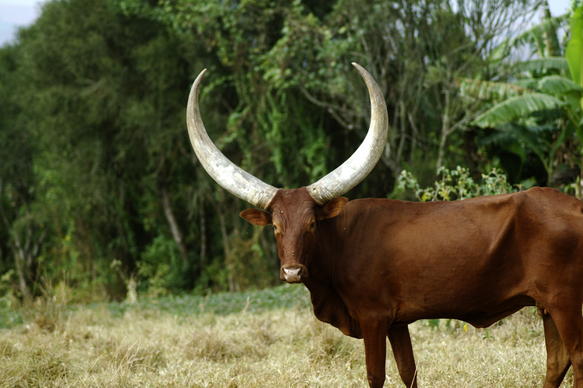

Every cattle farmer should know a few basic health facts about cows. Understanding the vital signs of a normal, healthy cow will help you diagnose and treat basic illnesses in your cows. Additionally, if you do need to call the vet, you can answer many of his questions over the phone. This could save you the expense of having the vet come to your farm and look at the cow.
Normal Cow Temperature
Normal cow temperature can vary by a couple degrees, depending on environmental conditions and how active the animal is. However, a normal cow should have a temperature between 100. 4 and 103.1, taken rectally.
To take a cow’s temperature, use a large-animal thermometer. Restrain the cow if she won’t hold still, because she’s not going to like what you have to do next. Insert the entire length of the thermometer into the cow’s rectum, and hold it there for three minutes. Be sure that you tie a string to the thermometer and wrap it around your wrist before you insert it into the rectum. A cow’s anal cavity is pretty big and you could easily lose your grip on the thermometer. Prepare to get dirty when you take a cow’s temp, because cows usually pass manure when they are nervous and especially when someone is messing around with their behinds.
If the cow’s temperature is too high, it can indicate that all is not well with her. She may be fighting an infection, or she may just have a mild virus. If the cow is running a low-grade fever, but she\’s still eating, don\’t worry too much, but be sure to mention it to the vet.
Normal Cow Pulse
If you have a stethoscope, you can listen for the cow’s heartbeat. However, most farmers don’t have this piece of equipment, so you may need to learn to feel for your cow’s pulse. You can feel for an artery under the cow’s tail, or you can feel the artery in the cow’s neck, near her jaw. A large artery runs around the base of the jawbone. A cow’s heart should beat between 40 to 70 times every minute. You can figure it by counting the number of heartbeats in 15 seconds and then multiplying that number by four.
Cow Respiration
Respiration is the number of times a cow breathes in a minute. Beef cows may take 10 to 30 breaths per minute, and dairy cows can breathe 18 to 28 times per minute. Breathing rates can vary depending on whether the cow is lying down resting in a cool place or running around on a hot day.
However, you should not only count the number of breaths your cow is taking; you should also note how her breathing is characterized. Is she straining for each breath or wheezing? Does her breathing sound congested? Is her breath rhythm unusual?
The best diagnostic tool that you have for your farm are your eyes and a keen observance of what is normal for your cows. Watch your cows for a few minutes every day. When you’ve made it a habit to cow-watch, you will be much more aware when something is wrong with one of your cows.
Sick cows look sick. Their eyes are dull and uninterested. They stop eating and they may separate themselves from the herd. Be sure to be proactive in managing the health of your cows.
 Contact Jaguza Support
Contact Jaguza Support